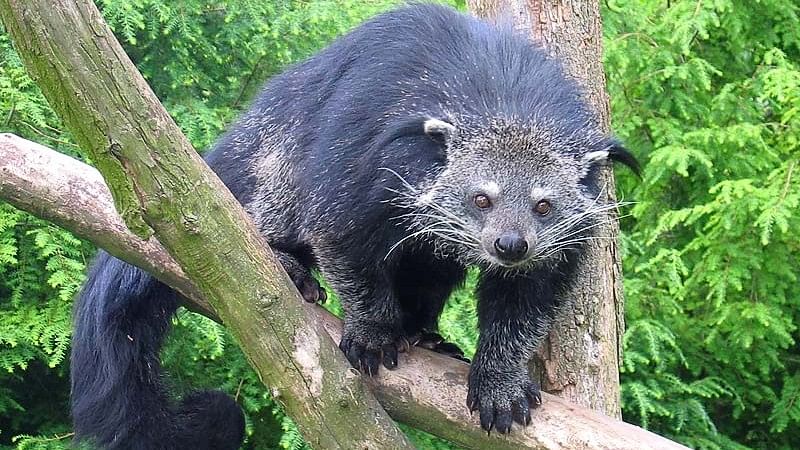
Binturong
Credit: By TassiloRau, CC BY-SA 3.0, https://commons.wikimedia.org/w/index.php?curid=207524
Guwahati: Two new mammalian species - Binturong or the bearcat and the small-clawed otter - have been recorded in the Kaziranga National Park and Tiger Reserve, taking the total mammalian species in the protected area to 37, an official said.
The two mammalian species were detected during the recent enumeration survey of water birds, park director Sonali Ghosh said.
The elusive Binturong (Arctictis binturong), also known as bearcat, is the largest civet in India and listed under Schedule I of the Wildlife Protection Act, 1972.
It was detected and photographed by tour guide Chirantanu Saikia while participating in the bird census, Ghosh said.
An arboreal mammal native to South and Southeast India, it is not easily found due to its nocturnal and arboreal habits, she said.
It is also uncommon in much of its range and is known to have a distribution exclusive to NE India, Ghosh added.
The second sighting was that of the small clawed otter and its photograph was taken by Divisional Forest Officer (DFO) of Eastern Assam Wildlife Arun Vignesh.
The otter was detected during a short training programme for officers and frontline staff jointly conducted by the Wildlife Institute of India in collaboration with the Assam Forest Department, she said.
The small-clawed otter (Aonyx cinereus), also known as the Asian small-clawed otter, is the smallest otter species in the world with a wide distribution range, extending through India in South Asia to eastwards in Southeast Asia and southern China.
In India, it is found mostly in protected areas of West Bengal, Assam and Arunachal Pradesh and in Karnataka, Tamil Nadu and some parts of Kerala in the Western Ghats region.
It was previously reported from western Himalayas and parts of Odisha though no recent records of its presence has been found in these regions, Ghosh said.
The species is also listed under Schedule I of the Wildlife Protection Act 1972.
Small-clawed otters have partially webbed feet with short claws, which make them skilled hunters in aquatic environments.
They are primarily found in freshwater habitats such as rivers, streams, and wetlands, where they feed on a diet of fish, crustaceans, and mollusks.
Small-clawed otters are highly social animals, living in family groups and communicating through a variety of vocalizations.
The forest department is planning a month-long Otter survey that shall be undertaken by the newly recruited frontline staff, Ghosh added.